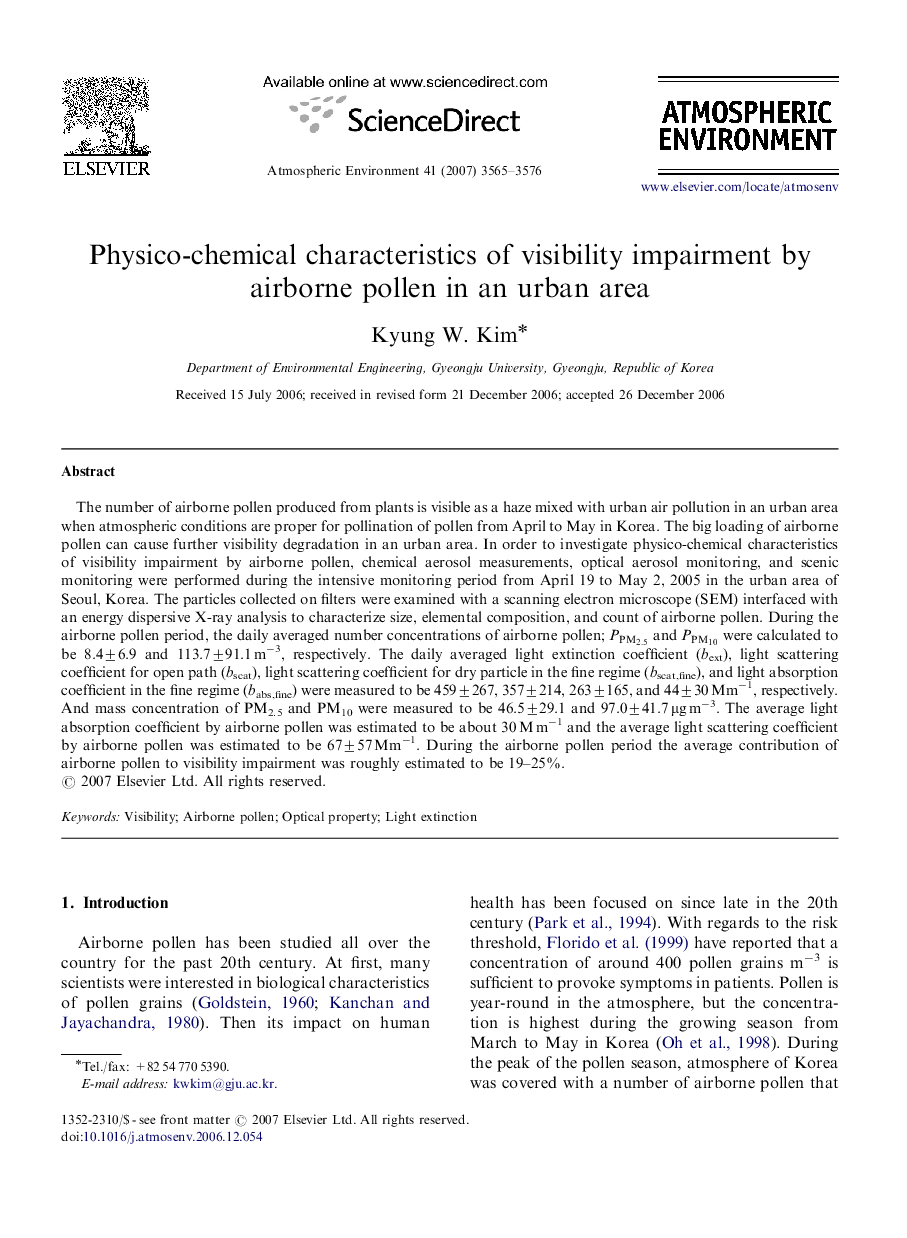| کد مقاله | کد نشریه | سال انتشار | مقاله انگلیسی | نسخه تمام متن |
|---|---|---|---|---|
| 4443551 | 1311198 | 2007 | 12 صفحه PDF | دانلود رایگان |

The number of airborne pollen produced from plants is visible as a haze mixed with urban air pollution in an urban area when atmospheric conditions are proper for pollination of pollen from April to May in Korea. The big loading of airborne pollen can cause further visibility degradation in an urban area. In order to investigate physico-chemical characteristics of visibility impairment by airborne pollen, chemical aerosol measurements, optical aerosol monitoring, and scenic monitoring were performed during the intensive monitoring period from April 19 to May 2, 2005 in the urban area of Seoul, Korea. The particles collected on filters were examined with a scanning electron microscope (SEM) interfaced with an energy dispersive X-ray analysis to characterize size, elemental composition, and count of airborne pollen. During the airborne pollen period, the daily averaged number concentrations of airborne pollen; PPM2.5PPM2.5 and PPM10PPM10 were calculated to be 8.4±6.9 and 113.7±91.1 m−3, respectively. The daily averaged light extinction coefficient (bext), light scattering coefficient for open path (bscat), light scattering coefficient for dry particle in the fine regime (bscat,fine), and light absorption coefficient in the fine regime (babs,fine) were measured to be 459±267, 357±214, 263±165, and 44±30 Mm−1, respectively. And mass concentration of PM2.5 and PM10 were measured to be 46.5±29.1 and 97.0±41.7 μg m−3. The average light absorption coefficient by airborne pollen was estimated to be about 30 M m−1 and the average light scattering coefficient by airborne pollen was estimated to be 67±57 Mm−1. During the airborne pollen period the average contribution of airborne pollen to visibility impairment was roughly estimated to be 19–25%.
Journal: Atmospheric Environment - Volume 41, Issue 17, June 2007, Pages 3565–3576